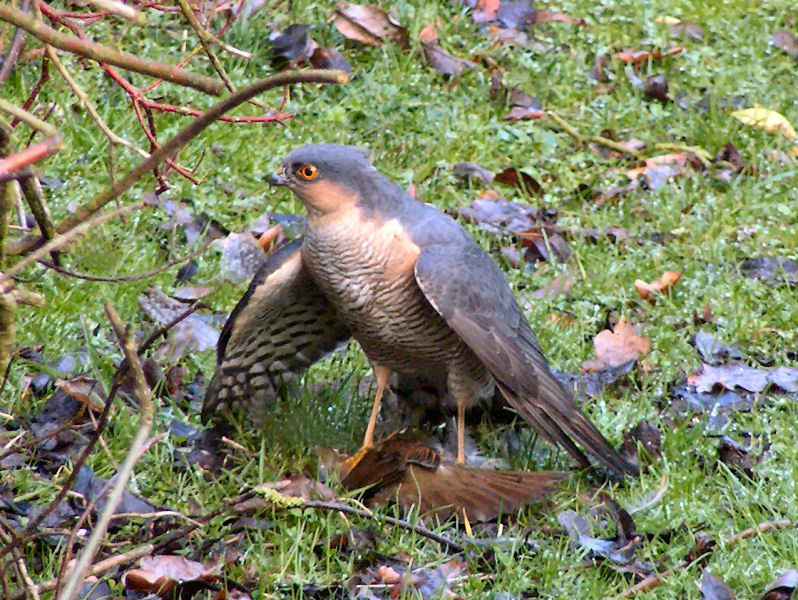|
| 질의: Grey falcon | 결과: 74번째/89 | |
Eurasian Sparrowhawk (Accipiter nisus) - Wiki
| 제목: | Eurasian Sparrowhawk (Accipiter nisus) - Wiki
| |

| 해상도: 798x600
파일크기: 207693 Bytes
촬영일: 2004:01:21 09:45:04
사진기: DiMAGE Z1 (Minolta Co., Ltd.)
F number: f/3.5
Exposure: 10/1250 sec
Focal Length: 580/10
등록시간: 2006:12:21 00:16:47
|
Eurasian Sparrowhawk
From Wikipedia, the free encyclopedia
[Photo] Male Sparrowhawk with House Sparrow kill. Photographed in Windsor, Berkshire, England on 21 January 2004.
The Sparrowhawk (Accipiter nisus) is a small bird of prey in the family Accipitridae which also includes many other diurnal raptors such as eagles, buzzards and harriers.
It is a widespread species throughout the temperate and subtropical parts of the Old World. It is mainly resident, but birds from colder regions of north Europe and Asia migrate south for the winter, as far as North Africa and India.
This species nests in trees, building a new nest each year. It hunts birds in woodland or cultivated areas, relying on surprise as it flies from a perch or hedge-hops to catch its prey unaware.
This bird is a small raptor with short broad wings and a long tail, both adaptations to manoeuvring through trees. The male is 29-34 cm long with a 59-64 cm wingspan, and is slate-grey above and barred reddish below. The male was formerly called a musket, and the gun called a musket was named after the bird.
The female is much larger at 35-41 cm length and a 67-80 cm wingspan. She is barred grey below, and can be confused with the similarly sized male Goshawk, but lacks the bulk of that species. The juvenile is brown above and barred brown below. The flight is a characteristic "flap ??? flap ??? glide".
The New World species formerly known as the Sparrow Hawk (Falco sparverius) is now called the American Kestrel. The new name is preferable, since this bird is not an Accipiter hawk but a falcon.
http://en.wikipedia.org/wiki/Eurasian_Sparrowhawk
| The text in this page is based on the copyrighted Wikipedia article shown in above URL. It is used under the GNU Free Documentation License. You may redistribute it, verbatim or modified, providing that you comply with the terms of the GFDL. |
|
댓글 |
|---|
| | 손님 |
|
| Eurasian Sparrowhawk/Sparrow-hawk (Accipiter nisus) |
^o^
동물그림창고 똑똑전화 누리집
^o^
|
|
|

